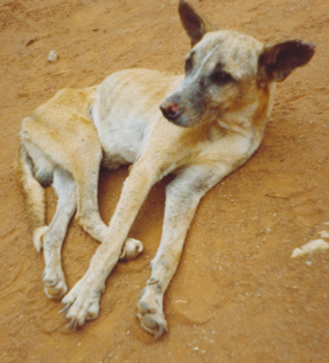The Use of Dogs in Animal-Based Research: The Rest of the Story
Sandflies and Lying Eyes
By: Patti Strand Date: 10/28/2021 Category: | Animal Research | Animal Rights Extremism |
By Patti Strand, NAIA President
If you’re a member of NAIA, you know that NAIA supports humane and responsible animal-based research when conducted according to the Animal Welfare Act[i] regulations and other authoritative guidelines. Our position is well-documented in NAIA position statements,[ii] the NAIA values statement,[iii] in Cindy Buckmaster’s GetReal![iv] podcast on our website (which is dedicated to having honest conversations about animal research), and finally through NAIA’s program, Homes for Animal Heroes,[v] an initiative that rehomes research dogs (mostly Beagles) when their studies are complete.
With that in mind, you’d be right if you guessed that NAIA’s phone started ringing off the hook when the new White Coat Waste (WCW) campaign hit the media with its photos of lifeless-appearing Beagles and a voice-over describing a research study where they said sandflies were eating dogs alive. The takeaway from WCW’s campaign is that the point of research is torture, not scientific discovery… and that Dr. Fauci is to blame and should resign. They didn't mention the debilitating harm to people and dogs caused by the disease being studied or that dogs would be major beneficiaries of the research.
 Figure 1 These photos can be found at Leishmaniasis in Tunisia: History and New Insights into the Epidemiology of a Neglected Disease Figure 1 These photos can be found at Leishmaniasis in Tunisia: History and New Insights into the Epidemiology of a Neglected Disease |
People from all sides of the animal research debate called to get our point of view. “What’s the story?” “Are you guys for torture?” “Is White Coat Waste a legitimate organization or just a right-wing version of PETA and HSUS?”
We spent several days gathering information we could share with our readers to enable them to understand a little more about a very complex subject.
One of the most informative documents we were able to locate and provide is the research study at the heart of this campaign.[vi] The study looked at the transmission of leishmaniasis, a parasitic disease that infects 700,000 to a million people worldwide annually and kills about 50,000.[vii]
Regardless of your views on animal research, reading the study will give you more understanding of the topic and contribute to your decisions about the value of the study.
Leishmaniasis is endemic in Tunisia where the Beagle research was conducted.[viii] Up to 50% of the dogs in some regions of Tunisia are infected with leishmaniasis. Six of the 12 dogs chosen for the study targeted by WCW were already naturally infected in the field.
Leishmaniasis is found in 90 countries located primarily in India, Africa, the Middle East, in South and Central America, and it is spreading.[ix] The sandfly that transmits it has been identified as far north as Texas and Oklahoma.[x]
 Figure 2 image source Figure 2 image source |
A huge international effort is underway to help developing countries reduce the harm associated with the disease. Leishmania has multiple strains and symptoms that present in varying ways. Some strains target the skin and mucous membranes, causing pain and scarring. Affected people are often so disfigured, they are shunned by their communities and become outcasts.[xi]
In other cases, it infects internal organs and can become fatal. Like malaria, it causes suffering and prevents infected people from being able to attend school or go to work. Leishmaniasis fuels the cycle of poverty in the regions where it is endemic and hinders countries from becoming part of the developed world.
The numerous strains of leishmaniasis complicate efforts to develop effective vaccines and treatments. Dogs are the leading reservoir and hosts of the disease worldwide and play a key role in helping scientists understand the disease. They will benefit from any vaccines, treatments and/or preventatives that are developed from current research. Studies aimed at understanding and curbing the transmission of the disease, like the one under review here, as well as studies to develop vaccines against the fatal strains are underway now.
National Geographic published two articles focusing on the subject of leishmaniasis that are worth reading. They chronicle the struggles of American Scientists who were infected with leishmaniasis while in Honduras[xii] and describe the challenges they faced when seeking treatment upon their return to the US.[xiii]
 Figure 3 image source Figure 3 image source |
Dog breeders should be aware of the transmission and symptoms of leishmaniasis. Foxhounds and Neapolitan Mastiffs are particularly vulnerable. The Italian Spinone Club of America is requesting its members to screen for it and provide samples. According to the article cited in figure 3, 150 positive tests have been received. The same article asserts that as early as 1940, 40% of the dogs in Rome were determined to be positive.
The discovery of leishmaniasis in a pack of Foxhounds in the US in the mid-1990s set off alarms because a number of the affected dogs had never visited areas where the infective sandfly is found. Questions led to studies that revealed that the strain of leishmania found in these dogs, L. infantum (one of the strains present in Tunisia) could be transmitted via the placenta to a female’s offspring.[xiv] Subsequent studies have shown that in some cases leishmaniasis can be passed through multiple generations and establish the disease in regions where the sandfly is not present.[xv] This finding may be why Australia requires shippers sending dogs to Australia to provide blood titers for rabies, canine brucellosis and leishmaniasis.
Australia’s dog import laws stand in sharp contrast to those found in the United States, where dog import laws have not kept up with globalization. Due to the widespread presence of lethal and life-altering pathogens in many countries that export dogs to the US – more than one million annually according to the CDC[xvi] – the National Animal Interest Alliance in partnership with the American Kennel Club and the American Veterinary Medical Association, introduced bi-partisan federal legislation this summer to impose vaccination and health screening requirements on dogs entering the US.[xvii] Until researchers are able to develop treatments, vaccinations, and cures for leishmaniasis and other lethal pathogens that infect people, pets, livestock and wildlife, such legislation will remain critically important.
After weighing the information in this summary, readers will reach their own conclusions about whether the animal-based research in Tunisia represents a horrific misuse of government funds as WCW asserts or if it is justified. For me, it isn’t even close. The international scientific community, (including US funding agencies) have a moral responsibility to support the animal-based research necessary to alleviate the suffering and death of millions of human beings caused by leishmaniasis. Additionally, US agencies charged with the responsibility to protect the health and welfare of American citizens, and the domestic animals and wildlife that live in North America must continue to support the scientific studies necessary to fulfill their mission.
White Coat Waste Project is not a credible organization. Although it positions itself as being concerned with government waste, White Coat Waste is – first and foremost – a radical animal rights group led by a seasoned Republican strategist. Sensationalism, false claims, and the omission of key facts reveal their fundamental dishonesty and put them squarely in league with groups like PETA and HSUS. For more information on WCW, please read the following article from Speaking of Research.[xviii]
Article Links
- [i] Animal Welfare Act
- [ii] NAIA position statements
- [iii] NAIA Values Statement
- [iv] Get Real podcast
- [v] Homes for Animal Heroes
- [vi] PLOS Neglected Tropical Diseases: Enhanced attraction of sand fly vectors of Leishmania infantum to dogs infected with zoonotic visceral leishmaniasis
- [vii] World Health Organization: Fact Sheet on Leishmaniasis
- [viii] Leishmaniasis in Tunisia: History and New Insights into the Epidemiology of a Neglected Disease:
- [ix] CDC overview of leishmaniasis
- [x] The American Journal of Tropical Diseases and Hygiene: An Atypical Case of Autochthonous Cutaneous Leishmaniasis Associated with Naturally Infected Phlebotomine Sand Flies in Texas, United States
- [xi] Science Direct: Leishmaniasis
- [xii] National Geographic: Pernicious parasite strikes explorers of the ‘lost city’
- [xiii] National Geographic: The little-known disfiguring disease that is coming our way
- [xiv] Wikipedia article on canine leishmaniasis
- [xv] Canine leishmaniosis in three consecutive generations of dogs in Czech Republic
- [xvi] CDC study estimating the number of dogs entering the US annually
- [xvii] HR 4239, S 2597
- [xviii] Speaking of Research: A fresh approach to animal rights activism…or is it?
Additional sources
About The Author
All Authors Of This Article: |






